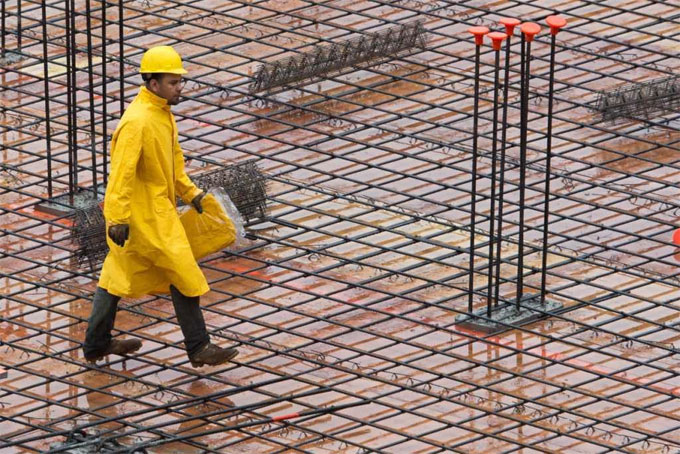It becomes difficult to pour or lay concrete throughout rain. In this construction article, you will get some useful suggestions on how to pour concrete in rainy season.
Concrete is a blending of various construction materials like cement, aggregate, water and admixture, etc.
The quality of concrete is greatly impacted by it’s strength that is dependent on the proportion of water & cement. The performance is considered as the prime factor of concrete as it defines the consistency in the sense of the quality. The precedence and percentages of the construction materials mostly influence the performance of the fresh concrete.
The rain water raises the ratios of water in the concrete mix while mixing, transporting, arranging, compacting and finishing. The sand and aggregate are drenched in the rain and therefore, the ratio of water in the concrete is increased. These factors enhance the proportion of water-cement in concrete mix. Despite the fact, that water-cement ratio makes the performance of concrete better, it decreases the strength significantly in due course.
The strength is decreased by 5% with an average rise of 0.1 of water cement ratio. Therefore, abstain from providing surplus water in any case. But the concrete can be poured in the rainy season with some precautions.
If the concrete is poured in the rain, the following adverse effect may happen.
It will be based on the given factors :-
• Whether rains occur throughout concreting or within 30 minutes that means initial setting time of concrete.
• If rain occurs among initial setting time and final setting time of cement that means after 30 minutes and before 600 minutes (10 Hour).
• If rain occurs after final setting time i.e. 600 minutes (10 Hour).
Tubular Monitor Roof Truss
01. The rain definitely impacts the concrete pouring if it happens prior to the preliminary setting that means when the concrete remains in fresh condition. The preliminary setting time of concrete is 30 min. The rain also greatly impacts the concrete at the time of mixing or transmitting.
The rain raises the proportion of water-cement in the fresh mix and so leads to bleeding in concrete. The bleeding of water also bears the cement particle with it. Therefore, the proportion of water cement will be decreased, that will again reduce the concrete strength.
When the formwork is set perfectly, the layer of cement slurry is developed on the top because of the settlement of solid particles with gravity action. This top layer turns out to be leaky and feeble in nature caused by rain that reduces the strength of concrete considerably. Often, plastic shrinkage cracks may also occur on the surface of the concrete.
For more information, go through the following article gharpedia.com





